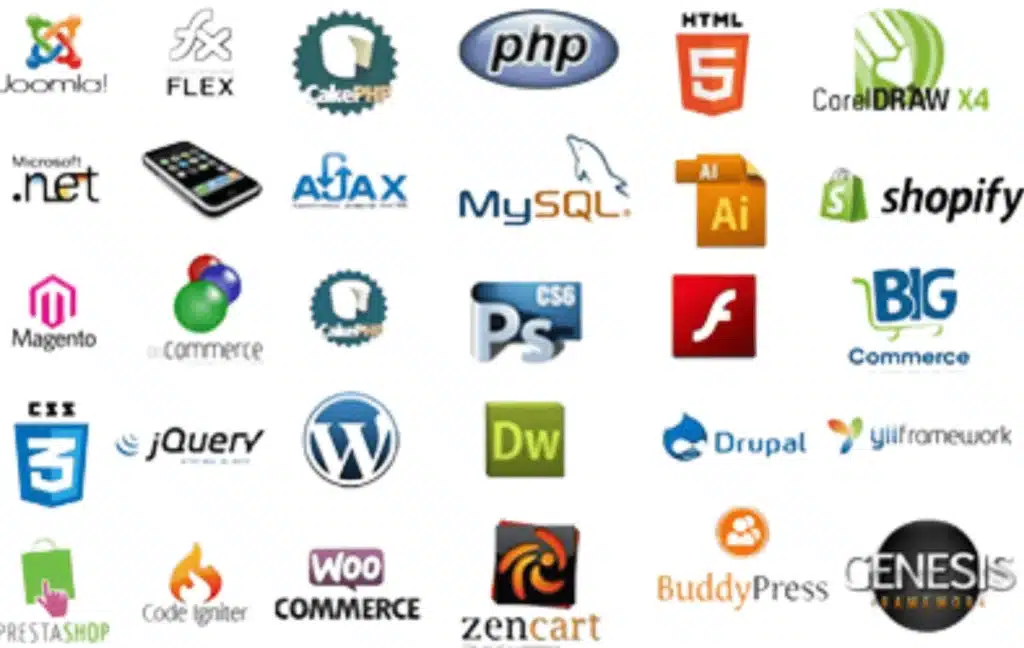Tech Naseer Website Design Agency has a strong foundation in web development, offering tailored solutions for businesses, startups, and enterprises. Whether you need a custom-coded website or a platform-based solution (WordPress, Shopify, Wix, Squarespace, BigCommerce), your agency can deliver high-performance and visually appealing digital experiences.
Would you like help with marketing strategies, portfolio building, or a specific project?
Define the purpose, target audience, and required features.
Sketch wireframes and design a user interface (UI).
Install Python (for backend if needed).
Install Flask or Django (if integrating backend).
Use a code editor (VS Code, PyCharm, Sublime Text).
Write clean, semantic HTML to ensure better SEO and accessibility.
Example:
<!DOCTYPE html>
<html lang=”en”>
<head>
<meta charset=”UTF-8″>
<meta name=”viewport” content=”width=device-width, initial-scale=1.0″>
<title>Tech Naseer Website</title>
<link rel=”stylesheet” href=”styles.css”>
</head>
<body>
<header>
<h1>Welcome to Tech Naseer Digital Agency</h1>
</header>
<section id=”services”>
<h2>Our Services</h2>
<p>Web development, digital marketing, and graphic design.</p>
</section>
<script src=”script.js”></script>
</body>
</html>
Create a styles.css file and apply styling:
body {
font-family: Arial, sans-serif;
background-color: #f4f4f4;
color: #333;
text-align: center;
}
h1 {
color: #007bff;
}Use script.js to enhance the UI:
document.addEventListener(“DOMContentLoaded”, function () {
alert(“Welcome to Tech Naseer Digital Agency!”);
});
If you need a dynamic website, use Flask or Django. Example using Flask:
from flask import Flask, render_template
app = Flask(__name__)
@app.route(‘/’)
def home():
return render_template(‘index.html’)
if __name__ == ‘__main__’:
app.run(debug=True)
Shared Hosting: Bluehost, Hostinger, SiteGround
Cloud Hosting: AWS, Google Cloud, DigitalOcean
Python Hosting (for Flask/Django): PythonAnywhere, Heroku, Vercel
For Static Sites: Use Netlify, GitHub Pages, or Vercel
For Python-Based Sites: Use Heroku or PythonAnywhere
Example: Deploy on Netlify
Push your code to GitHub
Connect GitHub repository to Netlify
Deploy your site with a free domain

Add meta tags in <head>
Use SEO-friendly URLs (yourdomain.com/best-web-design-services)
Optimize images (use WebP format and add alt tags)
Improve site speed (Use CDN, minify CSS/JS, enable caching)
2 Get Backlinks & Traffic
Submit site to Google Search Console
Share on social media (Facebook, Instagram, LinkedIn, Twitter)
Publish SEO-optimized blog posts
Run Google Ads & Facebook Ads for visibility
Tech Naseer Digital Agency can build all types of websites, including:

If you want to design any type of website using WordPress, you can create:
Would you like help selecting the right theme and plugins for a project?
With Squarespace, you can design various types of websites, including:
Would you like a step-by-step guide for building a specific type of Squarespace website?
Create an index.html file:
<!DOCTYPE html>
<html lang=”en”>
<head>
<meta charset=”UTF-8″>
<meta name=”viewport” content=”width=device-width, initial-scale=1.0″>
<title>My Website</title>
<link rel=”stylesheet” href=”style.css”>
</head>
<body>
<header>
<h1>Welcome to My Website</h1>
</header>
<main>
<p>This is a simple webpage using HTML, CSS, JavaScript, and C++.</p>
<button onclick=”showMessage()”>Click Me</button>
</main>
<script src=”script.js”></script>
</body>
</html>
Create a style.css file:
body {
font-family: Arial, sans-serif;
text-align: center;
background-color: #f4f4f4;
padding: 20px;
}
header {
background: #333;
color: #fff;
padding: 15px;
border-radius: 10px;
}
button {
padding: 10px 20px;
background: blue;
color: white;
border: none;
cursor: pointer;
}
button:hover {
background: darkblue;
}
Create a script.js file:
function showMessage() {
Since browsers do not run C++ directly, we need WebAssembly (WASM) to compile and execute C++ in the browser.
Emscripten is a tool to compile C++ into WebAssembly.
Install Emscripten (if not already installed):
Follow the installation guide
Set up Emscripten:
emsdk install latest
emsdk activate latest
source ./emsdk_env.shCreate a main.cpp file:
#include <emscripten.h>
#include <iostream>
extern “C” {
EMSCRIPTEN_KEEPALIVE
void cppFunction() {
std::cout << “Hello from C++!” << std::endl;
}
}
Run this command in the terminal:
emcc main.cpp -s WASM=1 -o wasm/module.js
This generates:
module.js (JavaScript interface)
module.wasm (WebAssembly binary)
Modify script.js:
var Module = {
onRuntimeInitialized: function () {
Module._cppFunction();
}
};
fetch(“wasm/module.wasm”)
.then(response => response.arrayBuffer())
.then(bytes => WebAssembly.instantiate(bytes, {}))
.then(results => {
console.log(“WASM Loaded”);
results.instance.exports.cppFunction();
});
Open index.html in a browser.
Click the button to see JavaScript and C++ (WASM) in action.
You can host the website using:
GitHub Pages (for static sites)
Netlify or Vercel (for easy deployment)
Firebase Hosting (for more advanced features)
That sounds like a great approach! Using HTML, CSS, JavaScript, and C++ via WebAssembly can create a highly optimized and interactive website. JavaScript handles UI updates and interactivity, while WebAssembly (compiled from C++) can be used for performance-critical tasks like image processing, data analysis, or real-time simulations.
If you’re looking for expert web development services with HTML, CSS, and JavaScript, feel free to send your inquiry to Tech Naseer Digital Marketing. 🚀 Let me know if you need help drafting a professional inquiry template or setting up a sample project using these technologies! 😊